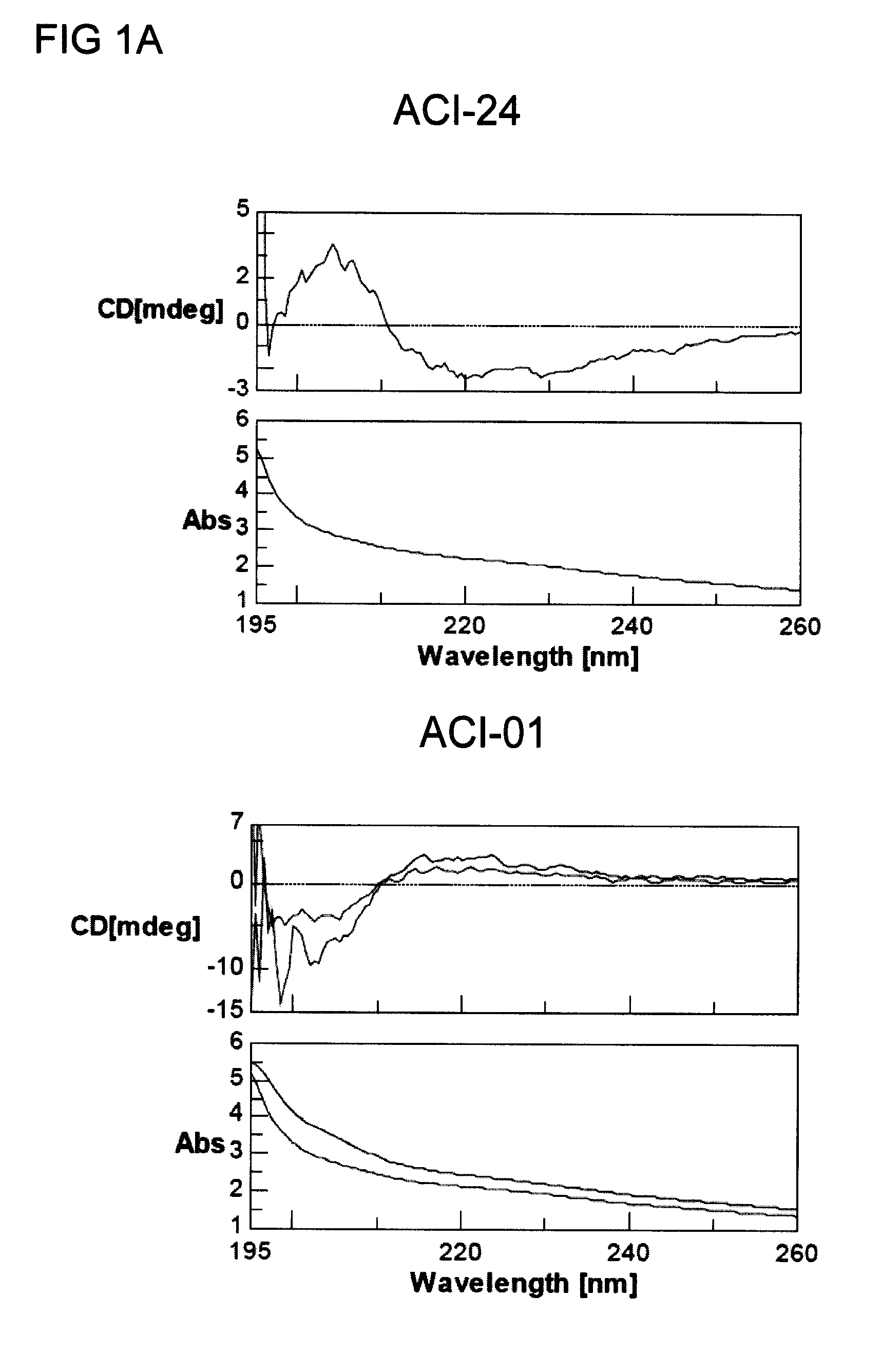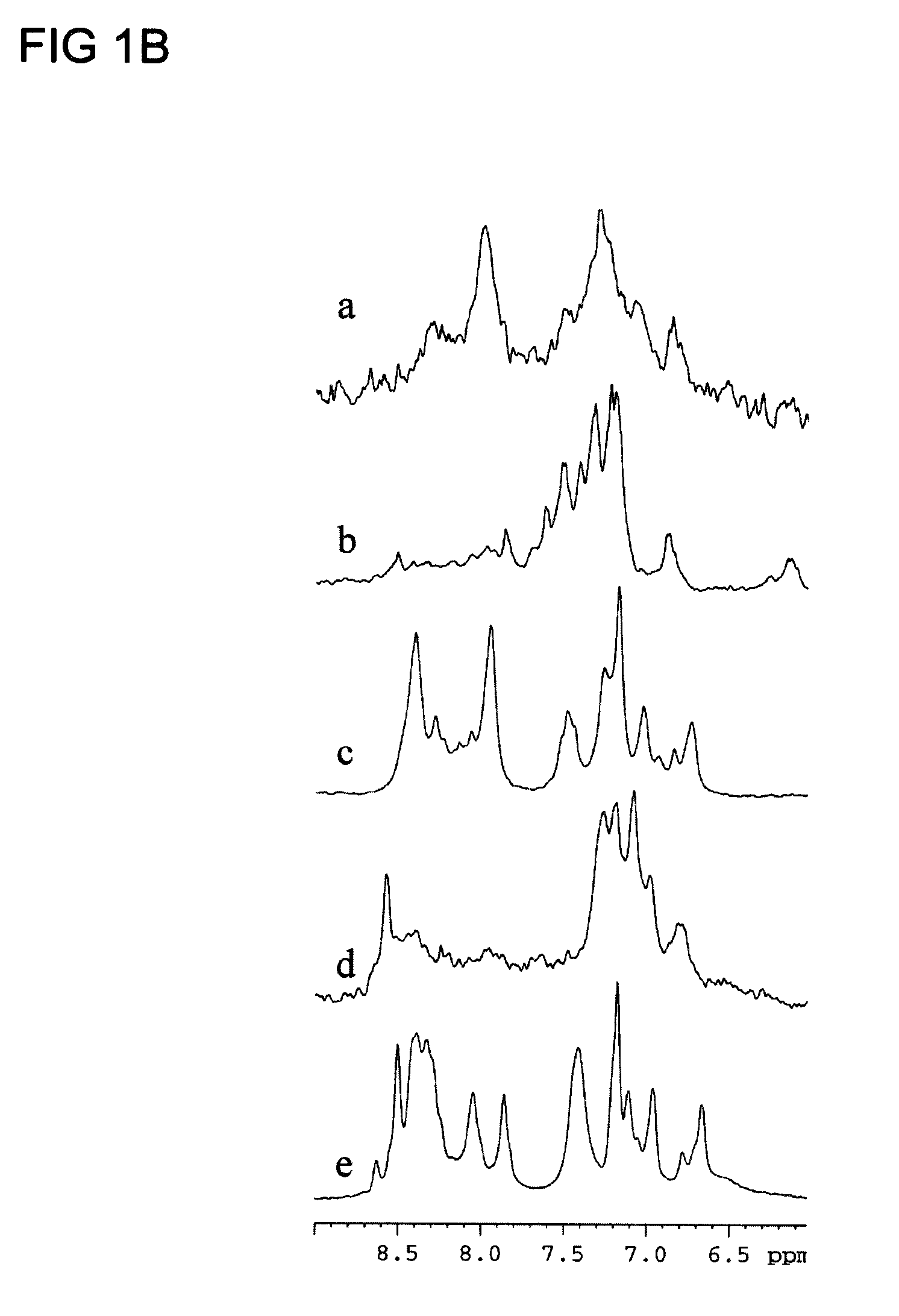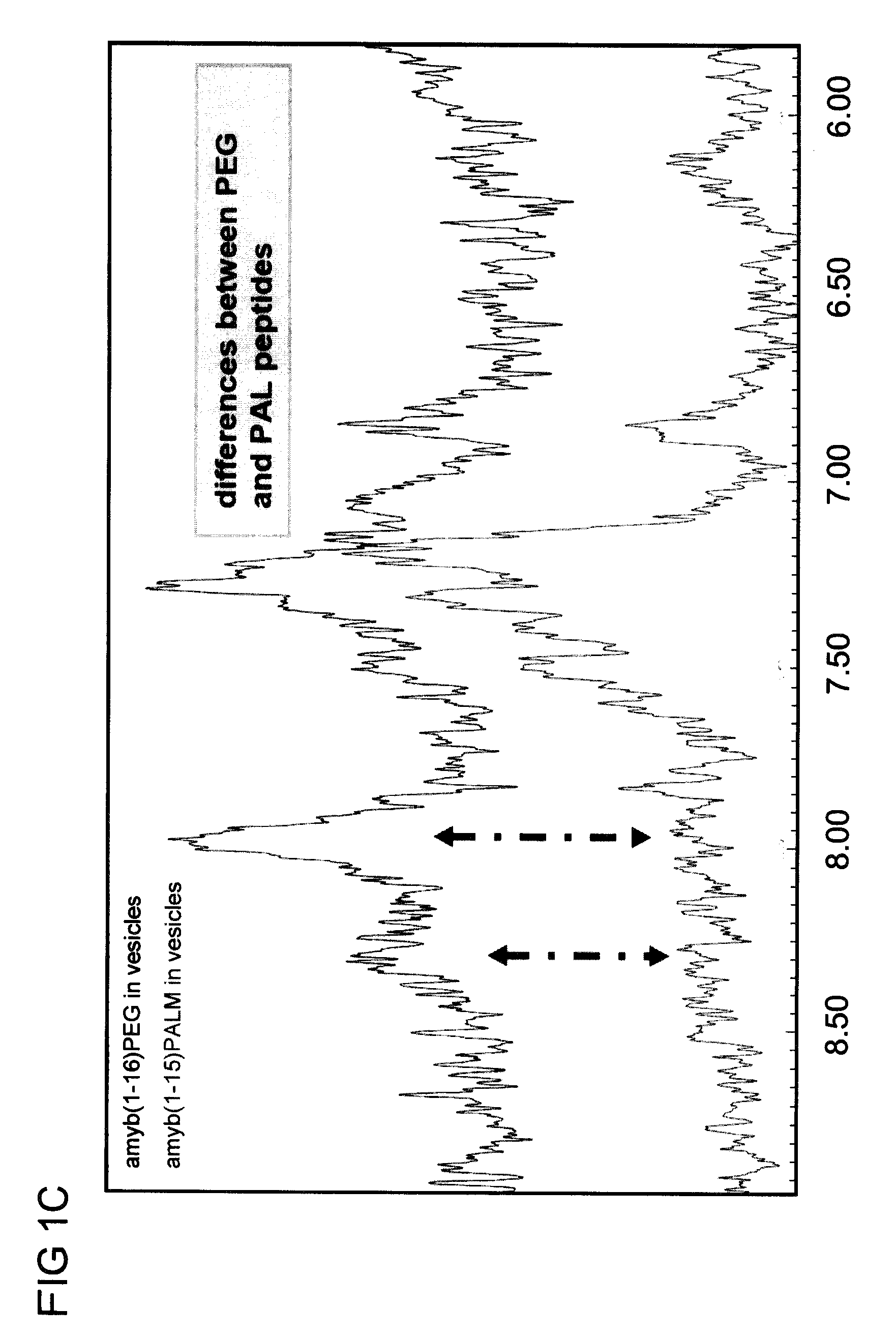Therapeutic vaccine
a vaccine and vaccine technology, applied in the field of therapeutic vaccines, can solve the problems of not being able to solve simple math problems, individuals may forget recent events, activities, familiar people or things, etc., and achieve the effects of restoring cognitive memory capacity, preventing or alleviating amyloidosis, and high specific and highly effective immune system
- Summary
- Abstract
- Description
- Claims
- Application Information
AI Technical Summary
Benefits of technology
Problems solved by technology
Method used
Image
Examples
example 1
Synthesis of tetra(palmitoyl lysine)-Aβ1-15 peptide antigen
[0225]1.1 Synthesis Protocol 1:
[0226]The palmitoylated amyloid 1-15 peptide was synthesized following an improved previously reported method (Nicolau et. al. 2002). This new approach involved on-resin grafting of palmitic acid to the terminal Lys residues of the pre-formed peptide rather than stepwise solid-phase synthesis incorporating the modified amino acid Fmoc-Lys(Pal)-OH. This new approach improves coupling efficiency and gives a product of considerably higher purity. Thus, the orthogonally protected amino acid Fmoc-Lys(Mtt)-OH was attached to a Wang resin using HBTU coupling chemistry. The Fmoc group was removed using 20% piperidine in DMF and a second residue of Fmoc-Lys(Mtt)-OH was coupled. Standard automated peptide synthesis using Fmoc / tBu chemistry and standard side-chain protecting groups was then used to couple on the next 15 amino acids. Finally, the last two amino acids coupled were Fmoc-Lys(Mtt)-OH. The Mtt ...
example 2
Synthesis of N- and C-terminal lipid-PEG β-amyloid peptide antigen
[0230]Palmitoylation, while providing an anchor for the peptide in the liposome bilayer, due to the relative reduced length of the C16:0 fatty acid moiety leads to the peptide practically laying on the liposome surface. Therefore, the cells processing the antigen will have to take up the entire liposome with the peptide, which could result in a slower immune response in relative terms.
[0231]To enhance the immune response, another anchor / spacer has been applied to reconstitute the peptide in the liposome, e.g. polyethylene glycol (PEG). PEG was covalently attached to the lysine residue bound at both termini of the peptide. At the other end of the chain (PEGn=70) phosphatidyl ethanol amine (PEA) was covalently bound to function as the anchoring element in the liposome bilayer. Thus, the liposome still functions as an adjuvant and the peptide being sufficiently far away from the bilayer can be processed alone and thus in...
example 3
Structure and Conformation Analysis
[0237]3.1 Analysis of Conformation of the Reconstituted Antigen
[0238]To anchor the antigen Aβ 1-15 on the liposomal surface a palmitoylated lysine tandem was used at each end of the peptide as previously described (Nicolau, C. et al, 2002).
[0239]The fatty acid of the palmitic acid contains 16 carbon atoms which have been shown to have the appropriate length for stable insertion into the liposomal bilayer. In this construct the peptide is practically laying on the surface of the liposome due to the length of the C16 fatty acid moiety. In an attempt to have the antigenic peptide associated with liposome-lipid A in a different conformation, another anchor / spacer has been used to reconstitute the peptide Aβ1-16 (ACI-01) in liposomes, namely polyethylene glycol (PEG with 77 repetitive units). The influence of the spacer between the liposomal anchor and the Aβ peptide on the secondary conformation of the amyloid sequence reconstituted in liposomes was me...
PUM
| Property | Measurement | Unit |
|---|---|---|
| time | aaaaa | aaaaa |
| time | aaaaa | aaaaa |
| concentration | aaaaa | aaaaa |
Abstract
Description
Claims
Application Information
 Login to View More
Login to View More - R&D
- Intellectual Property
- Life Sciences
- Materials
- Tech Scout
- Unparalleled Data Quality
- Higher Quality Content
- 60% Fewer Hallucinations
Browse by: Latest US Patents, China's latest patents, Technical Efficacy Thesaurus, Application Domain, Technology Topic, Popular Technical Reports.
© 2025 PatSnap. All rights reserved.Legal|Privacy policy|Modern Slavery Act Transparency Statement|Sitemap|About US| Contact US: help@patsnap.com



